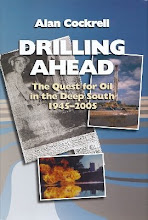I was awed when I saw it. Decades ago when I first started up a USAF A-7D, pushed up the power, heard that big Allison turbofan whine and eased out of the parking spot, I looked down at my crew chief and—to my utter amazement—saw him standing at attention holding a perfect salute. I had not seen this done in pilot training, because back at Vance AFB, civilians worked the ramp.
I wondered who he was saluting, me or his plane. He had a slight smirk on his face and I knew he was thinking: I hope that snot-nosed lieutenant brings my jet back in one piece.
That was my first exposure to a long and rich traditional practice in military aviation: the send-off salute. I liked that. It was a class act. I knew the crew chiefs were proud of their work. I saw that salute every time I flew the A-7. And when I got into the Reserve forces and pushed up the tall throttles of a C-130 or a C-141, I saw it again. Sometimes stripped above the waist to a t-shirt, they stood perfectly rigid, elbow straight-out, forearm angling and flat hand glued smartly to their brow. I always returned it. It was a matter of professional pride and mutual respect.
 |
| A drawing from our manual. I rarely saw one this sharp. |
But some—those I suspected were former military crew chiefs—rendered a a sharp, military-style salute. Those, I returned. Sometimes, after the salute, I would even see a flourishing Navy carrier deck style launch signal, which is an artful whirling of the body down onto the knees, arms stretched forward toward the launch direction. I loved it.
 |
| Here's how it's done. |
It's gone the way of many of the old traditions in this industry. No more water cannon salutes for retiring captains. No more pride in uniforms. No more special caring for passengers. It's just a job, now.
Every day it seems a light at the exit door glows brighter for me. It beckons: Come on. Your time is almost done. Count your blessings; you've tasted the golden years. Step on through.
I will—in due time. And when I do, I'll render a final proper salute, not the limp-wristed crooked Clinton salute, nor the hacking-arm Obama salute, but the real kind. The snappy, pride in your job, and respect for the person your saluting kind of salute. I'll turn and salute the plane.
One of my favorite places on the planet:
Spanish Peaks, Colorado. I've climbed the
west peak (far one) 4 times.
Quote of the post: There has always been a certain romanticism associated with the airline business. We must avoid its perpetuation at Eastern at all costs.
— Frank Borman



